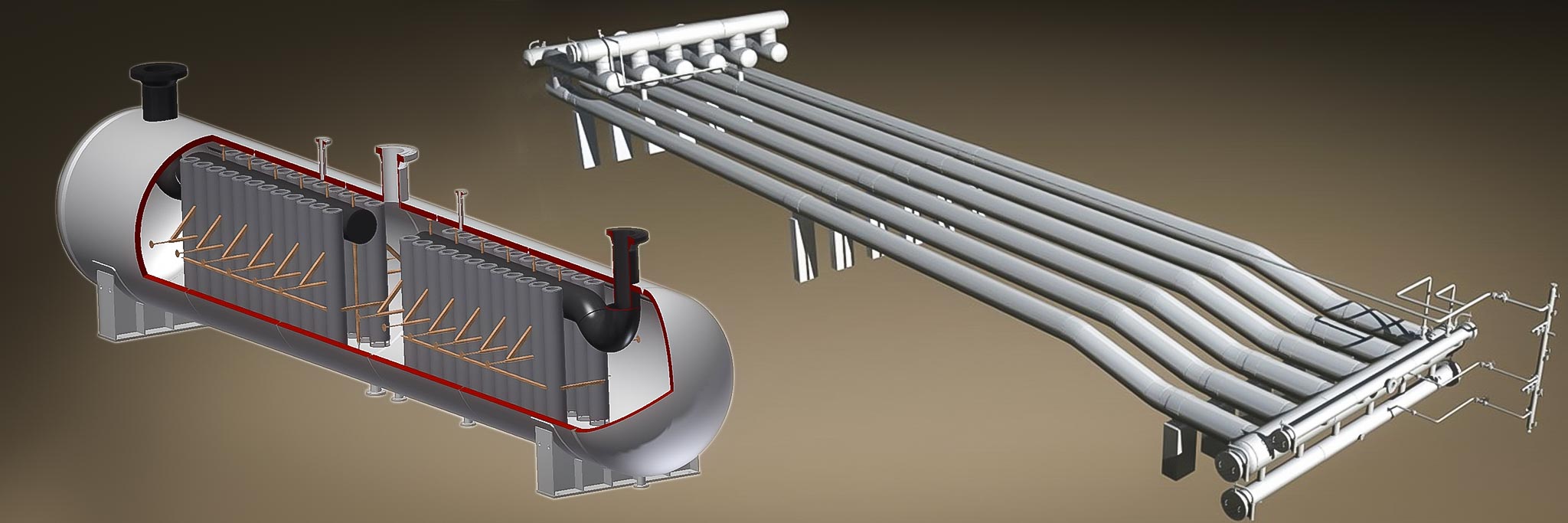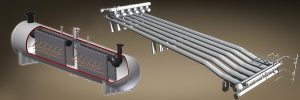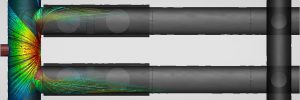Picking the slug catcher that meets your needs but doesn’t break the bank is a critical part of designing an economical processing facility. When deciding between a vessel slug catcher or a Harp/Finger type or a hybrid of the two, using the 5 metrics below, you’ll be able to quickly identify the direction for your facility.
1. Storage Capacity or Size of your Slug
- 1500 bbls or less: Vertical L-Type, B31.8 or ASME Section VIII, single or multi-tube. 5 micron separation. Utilizing a vortex separation vessel at the inlet of the slug catcher, this unit separates at high efficiency while storing the liquids in low-cost finger pipe. This design works only for low gas flow and low storage applications.
- 1500 bbls or less: Vessel Type, ASME Section VIII, Div 1 or 2. 150 micron separation performance.
- 1200-1500 bbls or more: Finger type (Harp Type, Pipe Type), B31.8 or B31.1. 150 micron separation performance. This is the most economical way to receive and store large slugs.
2. Plot Space
- Finger slug catchers are going to be longer than vessel slug catchers.
- Finger type slug catchers are most economical when they are long and skinny (minimize the number of fingers to process only the required gas flow rate). If your allotted plot space is very short (<100ft), it is likely that a vessel or vessels will be more economical.
- At >1500bbls, the vessel design will be wider and require more inlet piping than the finger type design.
- At >1500bbls, and unlimited plot space, finger type slug catchers will be more economical. Extrusions help limit the plot space and # of weld joints as compared to tees.
3. Lead Time
- A standard vessel slug catcher (say 500 bbls) is 30-42 weeks. A custom project that requires multiple vessels could take as long as 42-48 weeks.
- An L-type slug catcher can be delivered in 18-24 weeks.
- A standard finger or harp slug catcher can be delivered in 18-24 weeks with custom jobs needing 34-48 weeks.
4. Delivery
- Depending on your location, freight for your slug catcher can be very costly (especially for vessels).
- A finger slug catcher is typically shipped in 2-4 modules plus storage line pipe direct for the mill or distribution. Freight is relatively inexpensive and easy to find no matter the location due to standard trucking loads.
- Large vessels can cost just as much to ship as they are to build, especially in the Marcellus, Canadian, and Rocky Mountain regions. This is less of a concern in West Texas. Be sure to get a budget once you know the size of your vessel.
- In some Latin or South American countries, a finger type may be the only design that can be safely shipped on the highway system.
5. Field Install – Skilled Labor Availability
- Finger type slug catchers require a significant amount of site welding and labor. While no pieces will require the crane capacity of a vessel, you will need to set numerous sticks of pipe and provide numerous field welds. In some parts of the US and foreign countries, skilled welders can be hard to find. In these locations, you may want to avoid finger slug catchers.
- The installation of a vessel slug catcher will be simple and straightforward. There is minimal welding and the time to install is shorter (of course offset by longer fabrication times). The rigging and large foundation costs can mount when you have >2 vessels.
- Be aware, once the need for more than 2 vessel slug catchers is required, it’s probably worth comparing a finger type and to a vessel. When there are >2 vessels, remember, you’ll need a >30”ID manifold to integrate the vessel system to avoid maldistribution.
BONUS! Cost/Delivery Evaluation
Pressure Vessel
- Cost: $3.50 – $4.00 / lb.
- Delivery: 30 – 52 weeks
Harp Style
- Line Pipe cost: $1.00 USD / lb.
- Extruded Manifolds: $7.00 USD / lb.
- Delivery: 18 – 38 weeks








